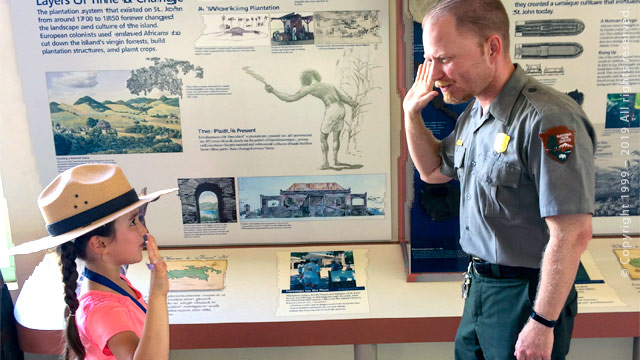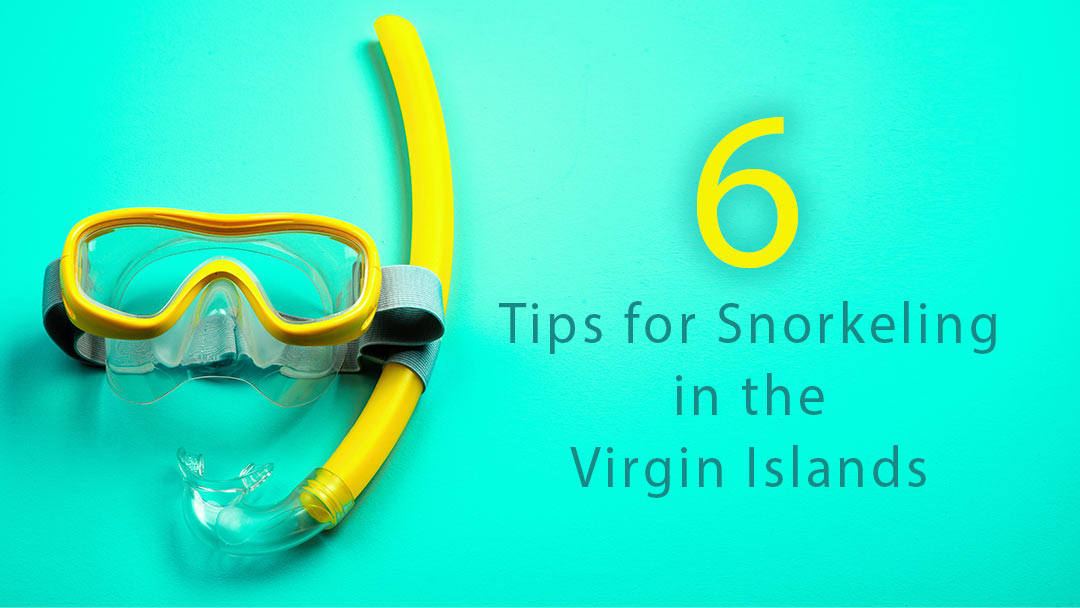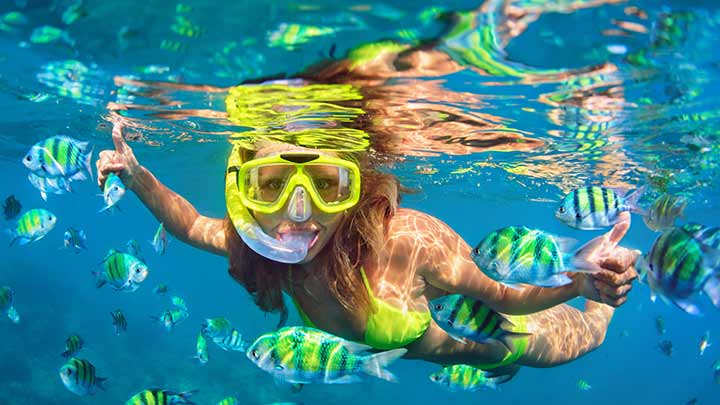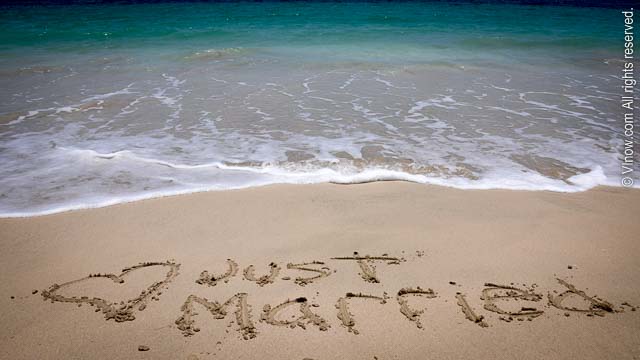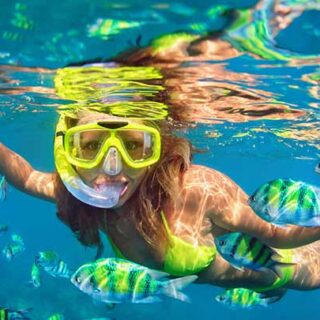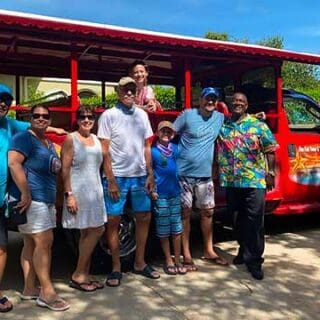The Virgin Islands National Park was established on December 1, 1956 to protect the natural and cultural resources on St. John. The park offers gorgeous beaches, beautiful scenery, hiking trails and opportunities to learn about the island’s history. If you are visiting with children we have some tips for you.
1. Safety is always first in a National Park
Protect your children from sunburn, have them use a long sleeved rash guard, a hat and reef safe sunblock. Remember to apply sunblock on spots like the scalp where hair parts, ears, and the tops of feet and hands.
Reef-Safe Sunscreens
Several common ingredients in sunscreens can be harmful to reefs and other sea life. Please do not use sunscreens that contain UV filters oxybenzone and octinoxate.
Recommended Sunscreens
Use flotation aids as necessary. Stick to the hiking trails and be aware of loose rocks, large roots, tree branches and drop offs. Use care around ruins as some have loose stonework. Pack bug repellent when going to the beach or hiking. Biting insects like no-see-ums and mosquitoes are largely active early in the morning, around sunset and when it is overcast or has been raining. Stay hydrated, drink lots of water.
2. Stop by the Visitor Center
Located in Cruz Bay, St. John the Virgin Islands National Park Visitor Center is a great spot to start your family’s exploration of the park. The center has displays that show and discuss the environment, plant and animal life, and history. Rangers and staff are available to answer questions about the park and help you plan your visit.
Lorem ipsum dolor sit amet, consectetur adipiscing elit. Ut elit tellus, luctus nec ullamcorper mattis, pulvinar dapibus leo.
3. Participate in the Junior Ranger Program

The Virgin Islands National Park Junior Ranger booklet covers a range of great topics including early inhabitants, the Taino. Your junior ranger will learn some Taino words still used today and about petroglyphs like those found at Reef Bay Trail on St. John. They will do exercises like writing about what they saw while hiking and at the beach. The booklet closes with a comparison of culture on St. John in the past and today on topics like housing and food.
Learn more about the National Park Junior Ranger program and find a variety of booklets available for your children to do at home at: https://www.nps.gov/kids/junior-ranger-online.htm.
4. Learn about History & Culture on St. John
A big draw of the Virgin Islands National Park is the opportunity to learn about the history of the island! Your children may grumble and ask why they can’t just go to the beach but make a point of visiting the park’s historical and cultural resources. Visit Annaberg Plantation to learn about the history of sugar plantations and slavery on St. John. Hike the Cinnamon Bay Self-Guided Trail to further explore the island’s plantation history and to learn about the Bay Rum industry. Ask at the Visitor Center if there are any cultural demonstrations scheduled during your visit, they are a great way to learn about local food and see culture bearers practice charcoal making, basket making and drumming. There is an annual Virgin Islands National Park Folklife Festival, it is held in February.
PS: The Virgin Islands National Park Junior Ranger program on St. John has a few levels, and the second booklet covers history and culture including the early days on St. John, industries like charcoal and basket weaving, native plants and more.
5. Explore the Underwater Environment
The waters around St. John support a diverse and complex system of coral reefs and other ecosystems such as mangrove forests and seagrass meadows. Snorkeling is one of the best ways to explore the underwater world with children. Depending on your child’s comfort level in water, understanding of water safety and their swimming skills you can decide whether snorkeling is the way to go. A good fitting mask is key, and getting your child used to wearing the mask and breathing through the snorkel. If you have access to a swimming pool you might consider having your child practice snorkeling at home in the swimming pool before your vacation, so they are ready to go once on St. John.
Visit the Virgin Islands National Park website’s kids’ section for park fun, games and online snorkeling! https://www.nps.gov/viis/learn/kidsyouth/beajuniorranger.htm

